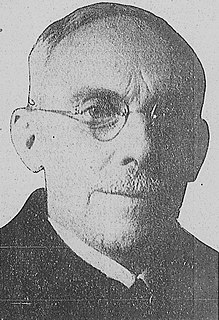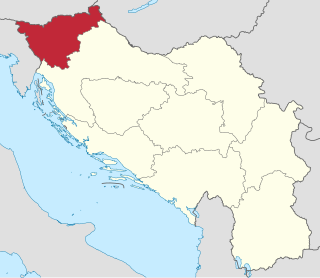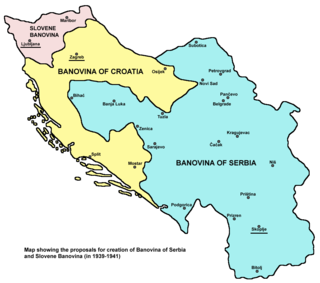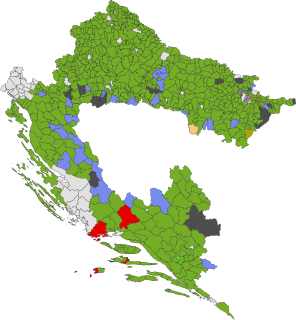
The Kingdom of Yugoslavia was a state in Southeast and Central Europe that existed from 1918 until 1941. From 1918 to 1929, it was officially called the Kingdom of Serbs, Croats and Slovenes, but the term "Yugoslavia" was its colloquial name due to its origins. The official name of the state was changed to "Kingdom of Yugoslavia" by King Alexander I on 3 October 1929.
State of Slovenes, Croats and Serbs became merged with Kingdom of Serbia and Kingdom of Montenegro to form the nation of Yugoslavia in 1918. The formation of Yugoslavia began with the formation of the Yugoslav Committee, a collection of mostly Croats, then Serbs and later Slovenes, whose goal was to form a single south Slavic state. In October 1918 the Croatian Parliament declared the Kingdom of Croatia - Slavonia as an independent state, which, in December that same year, incorporated in State of Slovenes, Croats and Serbs, merged with Kingdom of Serbia and Kingdom of Montenegro and created the Kingdom of Serbs, Croats and Slovenes. The kingdom would be renamed to Yugoslavia in 1929, and ruled by Serbian Karađorđević dynasty till Second World War. After the formation of Yugoslavia, Serbia attempted to create a "Greater Serbia" by using police intimidation and vote rigging to establish a Serbian controlled Yugoslavia. From 1929-1941 Serbian controlled Yugoslavia established control over Croatia through Royal Yugoslav police force brutality and assassinations of important Croatians.

The Vrbas Banovina or Vrbas Banate, was a province (banovina) of the Kingdom of Yugoslavia between 1929 and 1941. It was named after the Vrbas River and consisted mostly of territory in western Bosnia with its capital at Banja Luka. Dvor district of present-day Croatia was also part of the Vrbas Banovina.

Greater Croatia is a term applied to certain currents within Croatian nationalism. In one sense, it refers to the territorial scope of the Croatian people, emphasising the ethnicity of those Croats living outside Croatia. In the political sense, though, the term refers to an irredentist belief in the equivalence between the territorial scope of the Croatian people and that of the Croatian state.

Vladimir "Vladko" Maček was a politician in the Kingdom of Yugoslavia. As a leader of the Croatian Peasant Party (HSS) following the 1928 assassination of Stjepan Radić, Maček had been a leading Croatian political figure until the Axis invasion of Yugoslavia in 1941. As a leader of the HSS, Maček played a key role in establishment of the Banovina of Croatia, an autonomous banovina in Yugoslavia in 1939.
The 1939–40 Yugoslav Football Championship was the 17th, and last, season of Kingdom of Yugoslavia's premier football competition. The season lasted from May 2 to June 19, 1940.

The Drava Banovina or Drava Banate, was a province (banovina) of the Kingdom of Yugoslavia between 1929 and 1941. This province consisted of most of present-day Slovenia and was named for the Drava River. The capital city of the Drava Banovina was Ljubljana.

The Sava Banovina or Sava Banate, was a province (banovina) of the Kingdom of Yugoslavia between 1929 and 1939. It was named after the Sava River and consisted of much of the present-day Croatia. Until 1931, it also comprised White Carniola, now part of Slovenia. The capital city of the Sava Banovina was Zagreb.

The Littoral Banovina or Littoral Banate, was a province (banovina) of the Kingdom of Yugoslavia between 1929 and 1939. This province consisted of much of the Croatian region of Dalmatia and parts of present-day Bosnia and Herzegovina and was named for its coastal (maritime) location. The capital city of the Littoral Banovina was Split.

The Zeta Banovina, was a province (banovina) of the Kingdom of Yugoslavia between 1929 and 1941. This province consisted of all of present-day Montenegro as well as adjacent parts of Central Serbia, Croatia, Kosovo and Bosnia and Herzegovina. It was named after the Zeta River which also gave its name to the medieval state of Zeta that roughly corresponds to modern-day Montenegro. The capital city of the Zeta Banovina was Cetinje.

The Banovina of Croatia or Banate of Croatia was an autonomous province (banovina) of the Kingdom of Yugoslavia between 1939 and 1941. It was formed by a merger of Sava and Littoral banovinas into a single autonomous entity, with small parts of the Drina, Zeta, and Danube banovinas also included. Its capital was Zagreb and it included most of present-day Croatia along with portions of Bosnia and Herzegovina and Serbia. It had a surface area of 65,456 km2 and a population of 4,024,601 in late 1939. Its sole Ban during this period was Ivan Šubašić.

Banovina or Banija is a geographical region in central Croatia, between the Sava, Una, Kupa and Glina rivers. The main towns in the region include Petrinja, Glina, Kostajnica, and Dvor. There is no clear geographical border of the region towards the west and the neighboring region of Kordun. The area of Banovina is today administratively almost entirely located within the Sisak-Moslavina County.
The Cvetković–Maček Agreement, also known simply as the Sporazum in English-language histories, was a political compromise on the internal divisions in the Kingdom of Yugoslavia. It was settled on August 26, 1939 by Yugoslav prime minister Dragiša Cvetković and Vladko Maček, a Croat politician. The agreement established the Banovina of Croatia, drawn to include as many ethnic Croats as possible, which effectively created a Croatian sub-state in Yugoslavia, a demand of Croat politicians since the 1918 founding of Yugoslavia.
Yugoslavia had various administrative divisions in different time periods.
The subdivisions of the Kingdom of Yugoslavia existed successively in three different forms. From 1918 to 1922, the kingdom maintained the pre-World War I subdivisions of Yugoslavia's predecessor states. In 1922, the state was divided into 33 oblasts or provinces and, in 1929, a new system of nine banates was implemented.

The Banovina of Serbia or Banate of Serbia, officially known as "the Serbian Lands", was a proposed administrative unit of the Kingdom of Yugoslavia. Its creation was proposed after the establishment of the Banovina of Croatia in 1939. However, due to the Axis occupation and partition of Yugoslavia in 1941, the proposal was never implemented.

Dr. Džafer Kulenović, often referred to as Džafer-beg Kulenović, was a Yugoslav politician who led the Yugoslav Muslim Organization in the Kingdom of Yugoslavia, and was briefly Minister of Forestry and Mining in the pre-war Yugoslav governments of Dragiša Cvetković and Dušan Simović. During World War II, he served as the Vice President of the Axis puppet state the Independent State of Croatia.

South Serbia was a province (pokrajina) of the Kingdom of Serbs, Croats and Slovenes that existed between 1919 and 1922. It encompassed the modern territories of Sandžak, Kosovo and North Macedonia. The term "Old Serbia", was historically used in Serbian politics, literature and science for the territories of the province. The term continued in use for the Vardar Banovina and Zeta Banovina following its disestablishment.
Vukovar resolution was the document in which Serbs from Vukovar and neighboring communities, at the end of 1939 requested from central Yugoslav government exemption of Vukovar county from the Banovina of Croatia and its annexation to the Danube Banovina or future Banovina of Serbia.

The 1940 Croatian local elections were held in 625 municipalities of the Banovina of Croatia on 19 May 1940, and in 33 municipalities on 26 May and 2 June. These were the first elections following the Cvetković–Maček Agreement and the establishment of the autonomous Croatian Banate within the Kingdom of Yugoslavia. The elections were not held in cities and some Adriatic counties bordering, or adjacent to, Italy. Only men older than 24 were allowed to vote. Voting was public and conducted by voice.














